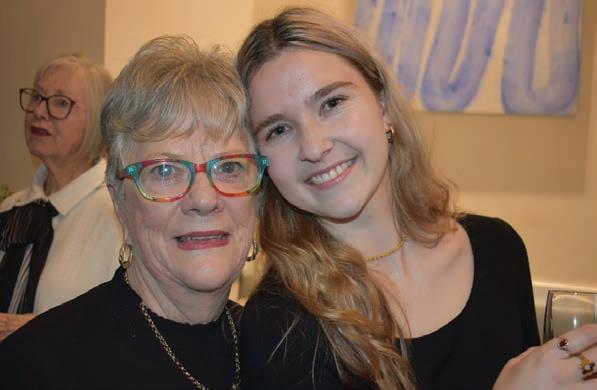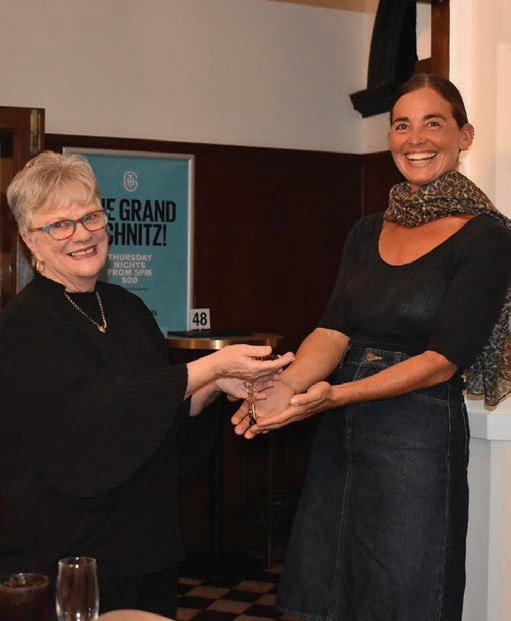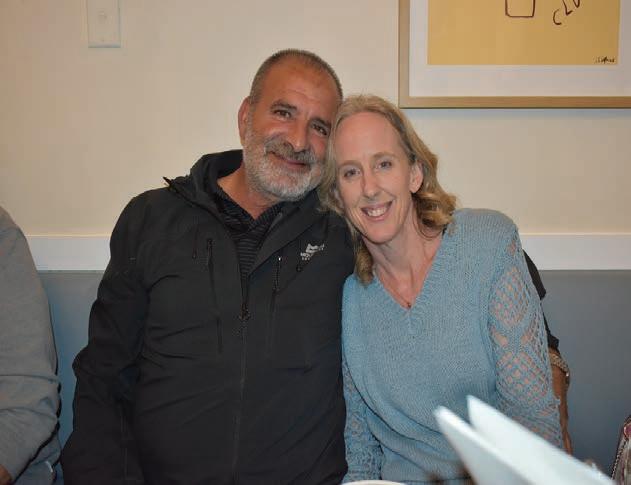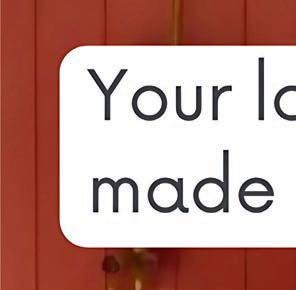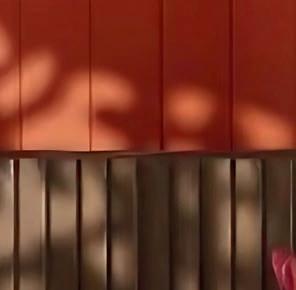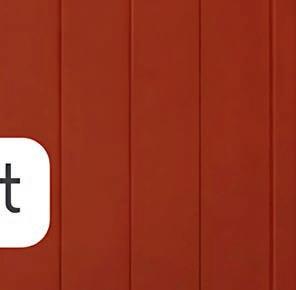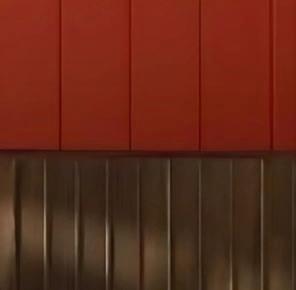













Paul Suttor
Member for Gilmore
Fiona Phillips has opened up on the strain of her achieving her goal of being re-elected after securing her third term on the back of a lengthy and draining campaign leading into last Saturday’s election.
Phillips managed to not only hold off Liberal candidate Andrew Constance but secure a swing of just under 5% to Labor as part of the nationwide trend which resulted in Anthony Albanese being returned as Prime Minister with a
majority government.
For the 55-year-old Gilmore MP, the slings and arrows of public life in an election campaign are part and parcel of the role but she is relieved it is now over.
“I was just elated,” she said when asked about the moment she realised the seat had been retained last Saturday night.
“I've had an opponent for quite some time, over a year, and I’ve had a lot thrown at me.
“I've just really tried to stay focused on what I've had to do, which is support our communities but everything
has been a really big strain on me, personally, so just to know that that part is over is very good for me and my team.”
Phillips, who was contesting her fourth federal election after losing in 2016 and then winning the next three, said she never questioned if it was all worthwhile.
“I always say you would really want to do this role because going through elections is really, really hard,” she said.
“ And I do want to do it. The moment I stop enjoying it, I won’t be doing it.”

“There's lots of different things we do as the federal member and it's a big electorate too - it takes in three local government areas, three state members and just to get across that area is huge.”
Phillips was surprised by the overwhelming nature of her victory given the bookmakers had installed Constance as an early favourite before a YouGov poll in the lead-up to the vote indicated that the tide had changed in her favour.
“Honestly I really thought it was going to be close and I had a quietly good feeling

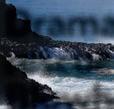








on pre-poll but you can never tell so I always like to err on the side of caution so I was pleasantly surprised on the night,” she added.
As polling closed late in the afternoon, Phillips spent some time with her family before joining her small army of Labor faithful to watch as the official results started filtering in.
Now, she says, her priority is to deliver on her promises of strengthening the local economy, alleviating the pressures of the cost of living crisis and helping facilitate Australia’s switch to renewable energy.
















Paul Suttor
Andrew Constance could not bring himself to use the R word but he e ectively retired from politics on Monday after his unsuccessful tilt at the federal seat of Gilmore.
After more than 22 years in politics, including a stint as NSW Treasurer during his 18year run as the Member for Bega, the 51-year-old is ready for the next stage of his life.
In a parting shot at failed Opposition Leader Peter Dutton’s short-lived attempt to cancel work from home arrangements for public servants, Constance quipped that he was looking for a gig in the corporate world or notfor-profit sector with flexible working arrangements.
After losing the 2022 election by a razor-thin margin of 373 votes to Fiona Phillips, this time around the Labor incumbent trounced him by around 10,000 votes as part of the nationwide swing against Dutton which has led to Anthony Albanese forming a majority government. He was philosophical about the election result.
“It's the community's decision.and they've made that choice. It's an important choice for them,” he said.
“I also want to wish Fiona well, and just say if Fiona exceeds in her role, then our community gets the benefit of that. And there are great things that need to happen. I'd like to see her achieve that.
Starting with the Princes Highway.
“I'll be honest with youunfortunately, it's gone back to the status of the deadliest in the country. We need Moruya bypass built so Batemans
Bay residents can access the hospital. We need MiltonUlladulla built, we need Nowra built, we need all those gaps filled in.
“Because if we don't, we're going to see a lot of lives lost over the next few years. And I don't want to see that for locals. I don't see that for any family. I don't want to see it for our visitors.”
Constance said he looked back fondly on his political career, seeing the “best of the community”.
“Whilst obviously the result is a challenging one to find within myself, I'm pleased that from a Liberal perspective, it's still a marginal seat. And ultimately, I want to now move on to the next stage of my life.”
“There's no point in life being angry. I couldn't be bothered with the emotions associated with that.”
Part of Constance’s newfound perspective on life comes from a health scare late last year. He kept it private but he suffered a major heart attack and needed to undergo emergency bypass surgery.
“I'd say to all people out there, particularly around the 50-year age bracket, go get your heart checked,” he said.
“I had an old schoolmate pass away two weeks ago, heart attack in his early 50s. We've seen too many lives lost to this silent killer across our community.
“I was lucky I was able to get the bypass done and I've now got another 30 to 40 years of healthy life.
“Be conscious of what you're eating, your lifestyle, stress.
“I'm philosophical about life. I love it. And everyone should too. I'm not going to get upset about an election resultlife’s too important.”



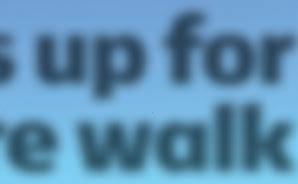


Strong
It was boots on sand and learning hats on this week as Kiama’s Deputy Mayor Melissa Matters joined a Landcare-guided coastal walk along Werri Beach.
The event, led by local plant expert Ailee Calderbank, was more than just a stroll, it was a hands-on lesson in the hard work, deep knowledge, and quiet dedication behind 20 years of Dunecare at Werri Beach.
Cr Matters’ presence signalled Council’s growing commitment to better understanding and supporting the work of Landcare.
She follows in the footsteps of Cr Melinda Lawton, who joined a similar walk earlier
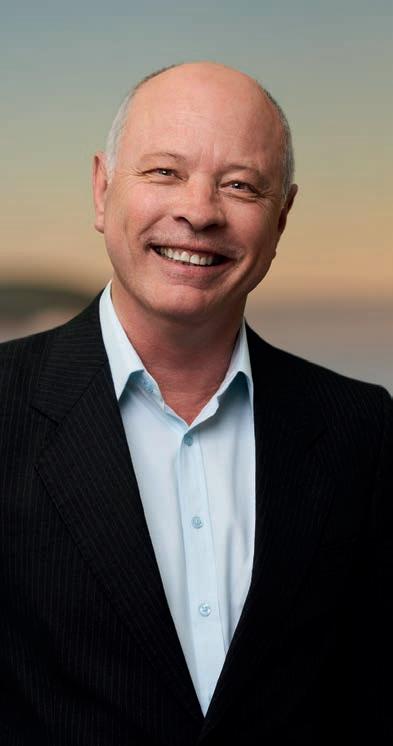
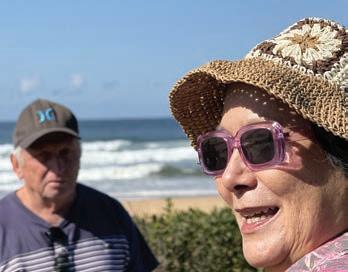
Both councillors are working to ensure Landcare voices are heard and valued in shaping council’s approach to environmental management.
Guided by Ailee Calderbank, the group explored the native plants that make up the coastal and littoral rainforest vegetation unique to the area.
From lomandra to banksias, the walk revealed how much life clings to the dunesdespite relentless pressure from invasive weeds, coastal winds and human impact.
Morning tea under the fig tree near Pacific Avenue provided a chance to reflect and share stories.
Participants heard how

Dunecare volunteers have spent two decades painstakingly removing weeds, revegetating fragile dunes, and restoring habitat for native species.


briefings.
And there’s more to come.
Their work is slow, steady and often unsung - but as Cr Matters noted, it is also invaluable.
“This kind of grassroots stewardship is what sustains our environment in the long run,” she said. “It’s not flashy, but it’s deeply effective.”
Landcare events like this offer more than ecological education.
They build relationships, between people and place, and between council and community.
By walking the beach together, council members gain insight that can’t be
Cr Erica Warren will be rolling up her sleeves to join volunteers at the upcoming community planting days throughout May:
Saturday 10 May – Bombo Headland
Saturday 17 May – Kendalls Beach (South End)
Sunday 18 May –Minnamurra Headland
Saturday 24 May – Werri Beach
Saturday 31 May – Little Blowhole, Kiama
Each event is hosted by a local Landcare group, and all are welcome to join.
Whether you are plantcurious, weed-wary or just after good company and a cuppa, there’s a spot for you.














Plittle side hustle. With From beachside banter to ballot box butterflies, our area reveals democracy in its most delightful form
olling day kicked o at Werri Beach with sunshine, salt air and the kind of chilled community spirit that makes you want to hug a stranger. There were no democracy sausages in sight (a national scandal, frankly), but the vibe was golden. Volunteers handed out how-to-vote cards without ambushing anyone. You could chat, laugh and still feel your personal space intact. I was o to a ying start.
Wandering south, things took a more sombre turn. Tucked beneath the trees stood the Forest of the Fallen, white silhouettes representing those lost after COVID-19 vaccinations. It was a quiet moment. People slowed. Some stopped. Some looked away. Whether you agreed with the message or not, it made you think. Democracy is layered like that.
Over in Kiama, the main booth had undergone a personality transplant since pre-poll. Earlier in the week, it felt like walking into a wind tunnel made of pamphlets. But polling day had a new mood. The circus had left town. Or maybe mellowed. One standout
was the owner of the local donut shop, who rocked up holding a spoof campaign sign that read Vote 1 Moist ’n Glazed, Candidate for Calories. She had a box of freshly baked donuts and a grin big enough to win votes on charm alone. The samples were superb. Satire, sugar and local business spirit in one neat bundle.
Kate4Gilmore’s crew brought the cute vote, with tiny dogs in yellow bandannas trotting about like they ran the joint. And the Liberal corner?
Let’s just say a couple of diehard farmer types I’ve known for years were handing out flyers and keeping it surprisingly civil. The day was full of surprises.
And then, the sausage salvation I had been waiting for. The Uniting Church barbecue was in full swing, expertly run by Rev Kath’s boys, who were turning snags like seasoned professionals. I arrived late and looking desperate. Fortunately, a long friendship paid off. I scored two sausages and the last of the onions. This, my friends, is the taste of democracy done right.
Then came the grand finale, Jamberoo.
The Red Cross stall had sold out by lunchtime. The Jamberoo P and C barbecue was flat out, thrilled, and sending out extra sausages. But the real scene stealers were the kids. Local school students had set up their own mini market stalls. One sparkly stand of resin earrings and keyrings caught everyone’s eye. What started as a postChristmas craft project had blossomed into a sweet little side hustle. With her mum’s help, the young maker now crafts joy in pastel and glitter. The customers could not get enough.
And finally, the legends themselves, Betsy’s ballot butterflies. Iconic butterfly cakes with cream centres and fluffy wings, known to vanish within minutes.
One local swears her friend lines up early just to get the first batch. If elections were judged by dessert, Jamberoo would be in government.

































Kiama has been named a nalist in the 2025 Top Tourism Awards, recognising not only its scenery but the work being done behind the scenes to market the town to visitors.
To be in the running, Destination Kiama created and submitted an itinerary aimed at a specific visitor demographic, alongside a video that uses that target market. According to Kiama Council’s Tourism and Events manager Sally Bursell, the process was about strategy and the community.
“It’s a bit of pride in our town too…If people say where you're from, I'm very proud to say Kiama,” Sally said.
“That's something that rings true for most people that live in this beautiful area, it's a testament to our welcoming community.”
Sally believes it’s the combined efforts of council, local businesses, and the community that make Kiama
a strong contender for this award.
“When people roll into town, they get a coffee from a friendly barista and the barista can tell you where to get the best loaf of bread or where’s the best surf break,”
Sally said
“It's a bit of a group effort from everyone that lives here.”
Part of Kiama’s tourism strategy has been to move away from increasing visitor numbers and instead encourage longer stays.
“It's really about our messaging, about come not just for the day, come for three days, because we've got all these things on offer,” said Sally.
“In terms of domestic visitor nights, which are people that are traveling within Australia and staying overnight, we were 24 per cent higher in our latest stats compared to the previous year and the average length of stay is over three nights.”
A strong and consistent
range of events, from the Kiama Winter Festival, the Jazz and Blues Festival to Changing Tides, have played a role in strengthening the town’s tourism appeal beyond its summer peak.
“There's lots of people that come in summertime and consider us as a summer destination,” Sally said.
“It's our job at Destination Kiama and Council to try and level that out and remind people how good the area is not in peak time.”
“We obviously have been running the Kiama Winter Festival for a few years… we find that because that's the time of year where our businesses are really crying out for more patronage.”
Destination Kiama is currently running a winter campaign in partnership with local businesses, offering deals to visitors to increase the town’s off-peak season.
Winners of the Top Tourism Town Awards will be announced later this month.
Lynne Strong
“It may not be ideal, but at least it’s a start.”
A fenced dog park is coming to Jamberoo by late July 2025, but not without questions from locals about location, size and shared use.
Guest speakers from Kiama Council, Donna Flanagan (Manager of Property and Recreation) and Peter Giouroukelis (Capital Works Project Coordinator), presented the plans at the latest Jamberoo Valley Residents and Ratepayers Association (JVRRA) meeting, outlining the project and responding to spirited community feedback.
The proposed park will be located at the south-east corner of the reserve between Gibson Crescent and Churchill Street. It will be 30 by 30 metres, fenced, and feature basic amenities like a drinking station, bag dispenser, bench and a single shade tree. The area will include a safety “airlock” entry gate.
The site was selected for its central location, existing infrastructure and compliance with planning regulations. Several alternative sites including the Jamberoo Cemetery, the reserve near the tennis courts, Reid Park, and Kevin Walsh and Keith Irvine

Ovals were ruled out due to zoning, user conflict or safety concerns.
However, locals expressed concerns about the size. “It’s not big enough to separate small and large dogs,” said one resident, worried about safety. “You’ll only be able to safely run five to ten dogs at a time.”
Parking also proved contentious. The proposed site currently serves as overflow parking for weekend football and events like the car show.
Peter Giouroukelis said the design avoids steeper, flood-prone land nearby, but gates could be opened to temporarily close the park during large events. Locals suggested using nearby Crown land adjacent to the Jamberoo cemetery for
overflow parking, which Council agreed to explore.
The $100,000 plus project (funded by Kiama Council and the NSW Government) aims to create a safe, inclusive space for dogs and their owners. Council officers committed to maintaining the facility, restocking waste bags, and providing signage to promote responsible pet ownership.
Some attendees questioned whether the space would serve larger or more active dogs, but others welcomed the overdue investment. “It may not be the most ideal outcome,” said one speaker, “but at least it’s something. A starting point.”
Brochures are available at Jamberoo IGA, and Council confirmed that works will begin later this month.

Lynne Strong
Opportunities are opening up for dairy exports, but here in our region, shortterm leases and rising land prices continue to limit our ability to seize them.
Indonesia’s plan to deliver milk to 60 million school children by 2029 could significantly expand demand for dairy across SouthEast Asia. According to a new report by Rabobank’s RaboResearch division, the program may require more than two billion litres of milk annually, opening the door for new export partnerships.
Yet, as the global opportunity grows, the local reality remains constrained.
Kiama’s dairy industry is led by a vibrant generation of young farmers.
Many lease land, invest in equipment, and breed awardwinning cattle.
But they do so under mounting pressure.
“Sustaining the industry here isn't about capability, it's about capacity,” one local farmer explained.
With Kiama’s coastal lifestyle in high demand, land values continue to climb.

The only buyers who can afford to enter the market are wealthy sea/tree-changers or developers banking on future zoning changes. That leaves commercial dairy farmers relying on shortterm leases, a precarious foundation for long-term
investment.
Meanwhile, young farmers in the Kiama LGA are quietly holding up the industry. They’re leasing land year-toyear, investing in equipment they don’t own the ground beneath, and trying to futureproof a legacy that is always at
risk of being edged out.
RaboResearch senior analyst Michael Harvey said the Indonesian school milk initiative, part of a wider Nutritious Meals Program, represents a major policy shift by the newly elected Indonesian government. “If
successful, it could double the size of the white milk market,” he said.
While the primary focus is on building domestic supply, Indonesia will remain a net importer of dairy, presenting opportunities for countries like Australia. Harvey
believes the greatest potential lies in exporting UHT and recombined milk products, as well as live cattle, genetics, and farm expertise. “To meet the increased milk demand, the local supply would require a fourfold increase in the domestic herd,” he said.
“That means importing over one million dairy cattle in the next five years.”
Australia is already a longstanding exporter of dairy cattle to Indonesia and holds a strong position thanks to trade access and wellregarded genetics.
But Harvey cautions the growth will not be a “game changer” for the Australian industry. It is, however, “a potential growth opportunity.”
For Kiama’s farmers, those words ring both hopeful and bittersweet.
The global prospects are strong, but local conditions make it difficult to build for the future.
What these farmers need isn’t just access to global markets. It’s secure, long-term leases and a recognition that productive agriculture has a place in regions as desirable as Kiama. Without that, export dreams may continue to curdle.
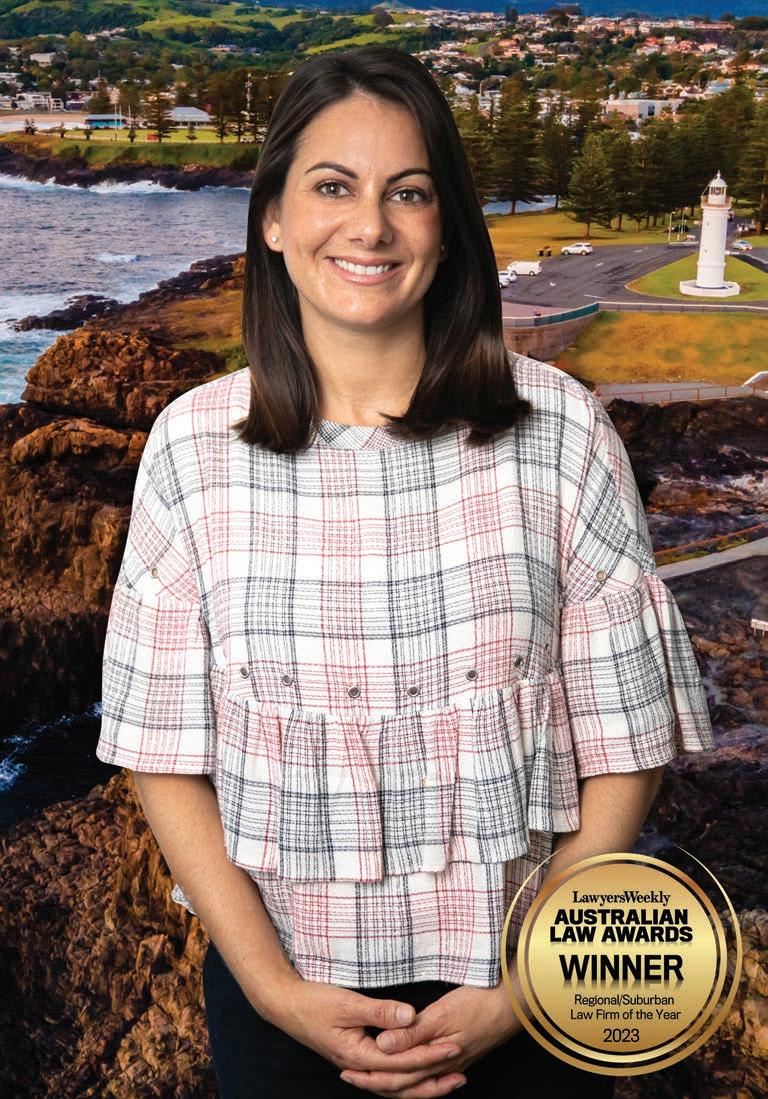

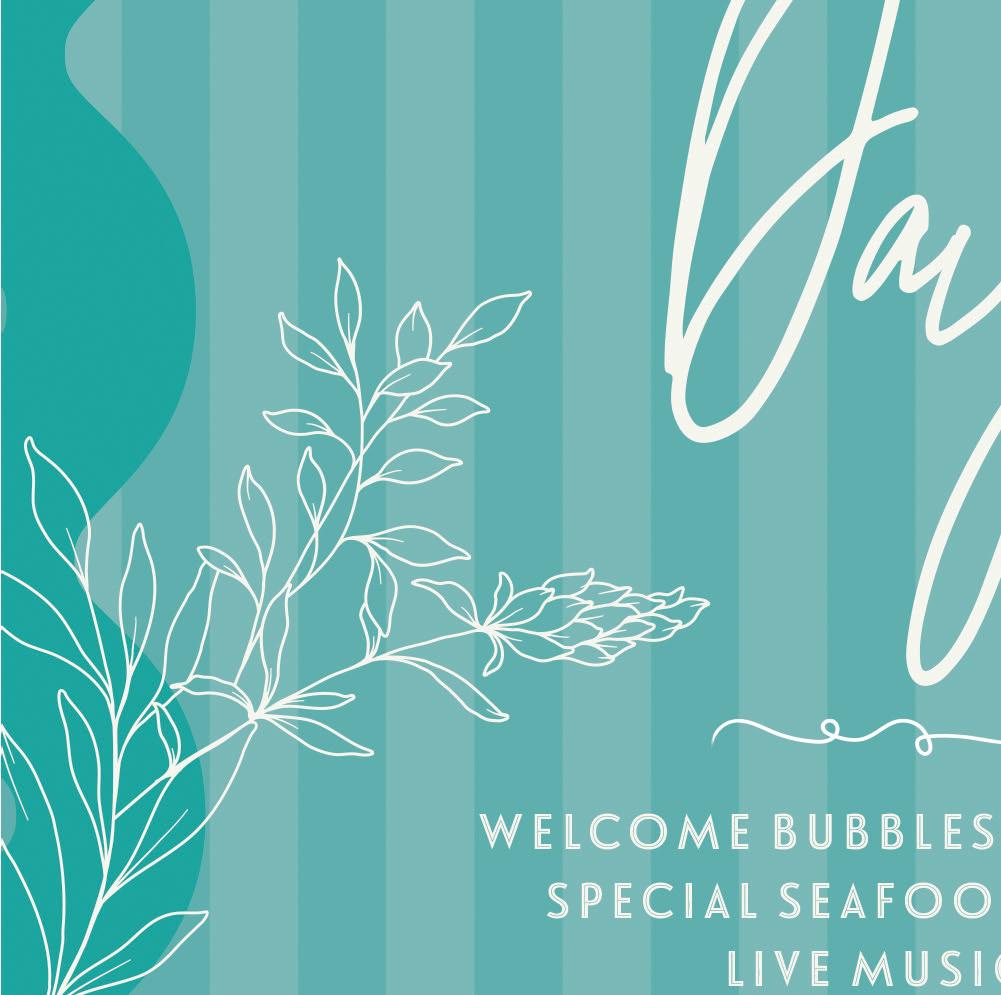



Sally Beerworth
Imay be the only person who can claim that a chicken nugget has actually improved my health, because it was over lunch at the Werri Beach Fish & Chip Shop that I decided to move to Gerringong.
In fairness, I had been contemplating “going coastal” for some years but had yet to find a town that would make interacting with Australia Post’s mail redirection team worth the headache. Living in Sydney meant being in a small (very overpriced) apartment that came with a view of the communal washing line.
I had begun finding it increasingly hard to look my neighbour in the eye, knowing he had a penchant for The Incredible Hulk underpants.
I also got far less pleasure than the woman upstairs everytime she picked up a bloke from the local pub.
So, when I pulled the car off the Princes Highway in early December last year, I stumbled across a town I didn’t want to leave.
If I could have, I would have had everything I owned shipped down the coast, there and then.
Had it not been for fearing the wrath of my overindulged cat who was waiting at home for me, I would never have returned home to Sydney.
I’m quite sure I’m not the only visitor to Gerringong, who has had this reaction, but for me it wasn’t just the view of the headland from the beach, or the artificial colours in my nuggets clouding my judgement.
It was that while I was walking along the beach, three people, three complete strangers, had said, ‘hello’ as I walked past them.
The only time I recall a stranger talking to me in Sydney, was when I walked

down the street one day, wearing half a meat pie on my face.
And, I’m fairly confident that the passerby in question was just checking whether or not I was OK not being unaccompanied by a carer.
Days later, I rented a house in Gerringong, sight unseen.
This is the only way I can explain to people why I was comfortable with the abundance of creamcoloured shag pile carpet in my new abode.
Frankly, the poor decisions of the 1970s were, in my eyes, a small price to pay for a house that was only several hundred metres from my purveyor of nuggets.
I gently pointed out to the real estate agent that it was indeed an oversight that the house’s close proximity to saturated fats was left out of the property’s marketing. She wasn’t the only participant in the conversation that walked away somewhat concerned.
I spent much of our interaction trying to work out why she was inserting ‘Gezza’ into every second sentence.
It wasn’t until I walked past the local pizza shop the following week, that I realised that this word, slash throat clearing sound, was the affectionate name given to the town by locals.
This nickname is perhaps the only thing I would change about my new home - the air is fresher, the water’s cleaner, the pace is slower and the nuggets are life changing.

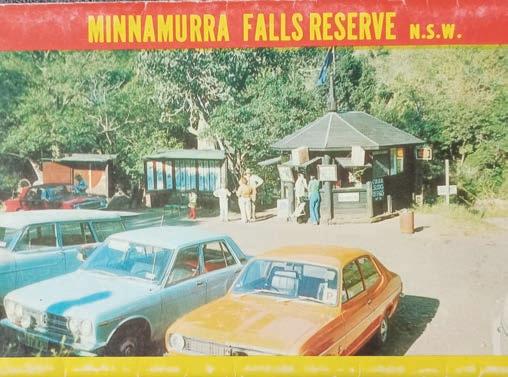
Mark Emery
One of our local wonderlands is the Minnamurra Falls. Situated beyond Jamberoo from Kiama, follow the Jamberoo Mountain Road to the foothills to a right-hand turn which will lead you to the parking area and kiosk.
From where you are launched into a primordial forest of transcendent ruggedness and beauty as nature intended its lovers to experience.
When I first saw it with my brother Cliff over 60 years ago, we were enthralled by the experience of being in a bush setting where seldom the foot of man had ever trod.
Like demons, we scrambled up the mountainside to the upper falls to see the cascading stream descending through the thick scrub to the lower falls.
We disturbed a couple of lyrebirds and they went scurrying at our approach, but the bush was full of bird song and near at hand wonga pigeons were calling.
We drank from the stream, and munched our apples while we revelled under the cloak of the forest and listened to its sounds.
We were bush boys, thoroughly versed in knowledge of the bush and of its inhabitants.
It was one of our prime joys to explore the bush and its wonders and listen to its songs, inspired and encouraged by the teacher at the little school in Foxground, where nature study was an important part of our learning.
An hour must have passed before we returned to the rest of our party of four, and found them splashing in the chilly water below the impressive lower falls.
As it was a hot day, we joined them for a swim before another scramble into the forest across the stream and back into the scrub where we found immense cedar trees growing.
Returning to join the others who had the billy boiling, we told them over lunch of our find, and said we would take them there. We were amazed and felt we had discovered something as precious as gold.
We vowed not to tell others of our find, for fear it might get to the ears of timber-getters and be destroyed.
Within a few years our fears were allayed however, for a Mr Judd, who was the owner on land adjacent, had the foresight to have the area declared a national treasure and placed under the care of the National Parks and Wildlife.
My interest was excited recently when our church group decided to have a picnic at Minnamurra Falls, and I agreed to go, knowing that over the years it had been developed as a tourist resort by the National Park trustees.
I was anxious to see the development, among other things. On the day I was held up and missed the departure of the rest of the troop, but still decided to go.
On my arrival I was surprised to find umpteen buses and cars had beaten me to the huge parking lot, laid out in terraces above the modern kiosk and launching point for visitors.
I could not find any of the party, so concluded they had already made their way into the forest, and I would catch them up, or else they had called the trip off without telling me.
I had not seen the changes that had taken place, although I had heard of the board walkways installed in latter years.
I was surprised to find they diverged and did not include the lower falls, which was a pity, for they had an appeal equal to, if not better than, the cascades of the top falls.
Once on the wooden walkway I found it a tremendous advantage, especially as they are capable of being undertaken on wheelchairs, and all people were able to enjoy the scent and beauty of the bush.
Without hesitation I took the path to the top falls, passing many teams of schoolchildren pausing on the way to be instructed by their leaders on aspects of the bush.
Iwould have liked to participate in the lectures for I was disappointed to notice trees like Sassafras, Maiden's Blush, Cedars and a thousand others were not identified for the benefit of students, and there was a possibility of them not being known by the teacher as well.
However it was not my task, and I continued on in search of the falls, reaching them after a walk of an hour and a half.
Owing to recent rains they were going at full blast, cascading over the rocks in holiday mood.
I reflected on the ease the walkway made when compared with my first sighting of these falls, and I hoped the timbered walkway would be able to withstand the gloom and damp of the forest.
On my return I observed the bottom fall from above only, and had to peer through the branches to see them at all.
I wondered just why a platform had not been erected at the pool below for a better presentation - perhaps it is still in mind.
At the joining of the walkways I found the second one led me back to the
magnificent Cedar trees my brother and I had 'discovered' so many years back.
And I was proud to see them again in their pristine beauty, appearing more immense and numerous than I remembered.
I stayed a long time at this point just thinking and admiring and reflecting on the foresight of one man who had made their preservation possible, and I dashed a tear or two to know they now would never fall to the axe!
It does your soul the world of good to know that millions of people may now see the living tree that had opened the coast of NSW to other pioneers, almost forgotten as we race madly by on bituminised roadways between towns, always in a hurry with no time to reflect.
As I sat in my car and had my sandwiches and tea (from a thermos flask), I felt I should gather some friends and come back to this place when the weather is comfortable and the locusts are chirruping.
I would like there to be just ourselves, and we could boil a billy of tea by the creeks, and I could tell them of our 'discovery' and the swim I had way back in 1936!














Lily is an eight-year-old Moodle, that's a cross between a poodle and a Maltese.
She is quite the fashionista with her easily recognisable pink tail.
Lily has been with her owner Diane since she was a tiny puppy weighing less than a kilo and would have blown away in a strong wind.
Though still very petite, Lily now hits the scales at a whopping three kilos. Her distinctive pink tail came about some time ago - while staying with her owner’s friend, Lily came home with her new look and it has now become her trademark hairstyle.
She loves chasing balls and welcoming other dogs and people to South Bombo Beach.
Don't be fooled by her small stature - she really is the queen of her domain.

Max is a beautiful German Shepherd who joined the Stokes family five years ago as a COVID puppy at 13 weeks old.
He has a strange penchant for catching stones, though thankfully not eating them. Max loves to catch stones on his daily walks thrown by his owner, David, and remains very fixated on his movements as he waits for the next opportunity to reveal his catching techniques.
Throwing balls for Max is another ball game (pardon the pun). He will catch the ball but you won't get it back.
What may appear as a lost ball will turn up again out of the blue in the following days during his walks.
An extremely gentle dog Max loves to sleep cuddled up with his family’s granddaughters.
He is however very protective of his family and the people that reside in the estate where he lives with his family.




Flynn is a long-haired Weimaraner, which is a German hunting dog known as the Silver Ghost or Grey Ghost, and when you see Flynn you know why.
Spotted with his family on Anzac Day morning at the Bombo Headlands, Flynn joined the family as a 10-week-old pup two and a half years ago.
Flynn is hard to miss with his absolutely stunning silvery grey colouring and he exudes personality as he smiles at you.
He walks with his family regularly at the Bombo Headlands and then has drops by the local coffee shop where he is affectionately known as the Mayor Of Kiama due to fact he greets everyone who comes in.
His welcome may include his cute bum dance he likes to do when he gets excited. If you live in Kiama you possibly already know Flynn.
He truly thinks he is human and has a beautiful bond with the family’s twoyear-old toddler “sibling” and they love to share their toys.
The toddler likes to call his canine pal “Mimi” and as he can't quite grasp Flynn yet.
Photo: Linda Faiers


Meet “H” the black pug. Named after his owners grandfather Henry Joseph Cornelius Twomey, who fought in World War II and was nicknamed Black Harry by his mates.
H loves living in Kiama and taking trips to Bombo Beach with his mum, and is an avid TV watcher, especially when spotting fellow canines or any four-legged animals.
A close second to this is visits with his neighbours Lyn and Bobby where he is spoilt with yummy treats.
He has more Kong toys than most dogs and loves a Tug-Of-War with his dad. Always up for treats and cuddles H loves meeting new friends.



Lynne Strong
When two gifted quilters answered a quiet call for help, they stitched more than fabric. They stitched memory, respect and community into every thread.
The two quilted panels now hanging in Jamberoo’s RSL Hall began their journey in Broken Hill.
Barbara Adams, president of the local Red Cross, saw them in a craft store and immediately felt their potential. She brought them back home, hoping they’d find someone to bring them to life.
That connection was made by Annette Hoskins, the Community Coordinator of the Kiama Quilters Guild and a long-time volunteer with the Children’s Medical Research Institute (CMRI).
Annette is known for quietly connecting people and projects with purpose.
She brought the panels to the Guild and asked if anyone might be willing to quilt them. Two members,Teresa MacPherson and Robyn Thomson, stepped forward.
Teresa, who moved to Kiama five years ago, discovered the quilting group through The Bugle and has found a deep sense of belonging through her involvement.
Though she downplays her role, describing herself as “just one of a team,” it’s clear her contribution was heartfelt. “Anything that involves community, I love to be part of,” she said. “And being able to contribute to the Anzac spirit means a great deal to me. I lost relatives in the World Wars, so this was personal.”
For Robyn, quilting has been a part of life for 30 years, but it wasn’t until moving to Kiama that she joined a group.
She spent decades living in Scotland and the United States before returning to Australia with her husband, who works remotely in immunology research. “It’s a pleasure, really,” she said. “But it’s selfish too. I do it because I enjoy it.”
Teresa MacPherson and Robyn Thomson in front of a poppy quilt at Jamberoo RSL. The quilt honours those who served and includes handmade poppies contributed by fellow
community quilters. The pair are long-time contributors to community quilting projects, especially those that support the CMRI through the Genes for Jeans campaign.
But last Saturday’s unveiling of their Anzac quilts in Jamberoo was something new. They were present. They were celebrated. “A little overwhelming,” Robyn said. “But very, very nice.”
Each quilt, while based on a pre-printed panel, was brought to life by hand.
Other members of the quilting group were invited to create beautiful crocheted and knitted poppies, which were then carefully attached to the quilts, adding a special handmade touch.
The added details, including crocheted poppies and careful stitching, reflect a shared effort. It’s a striking example of what happens when quiet craft meets community care.
As Teresa put it, “We thought we’d just send them off and maybe one day get down to Jamberoo to see them. Now hanging in Jamberoo’s RSL Hall, these quilts are not just beautiful.

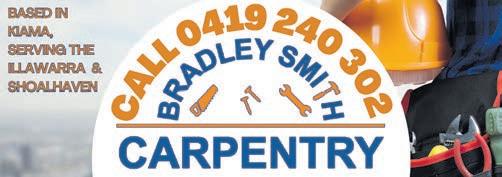






































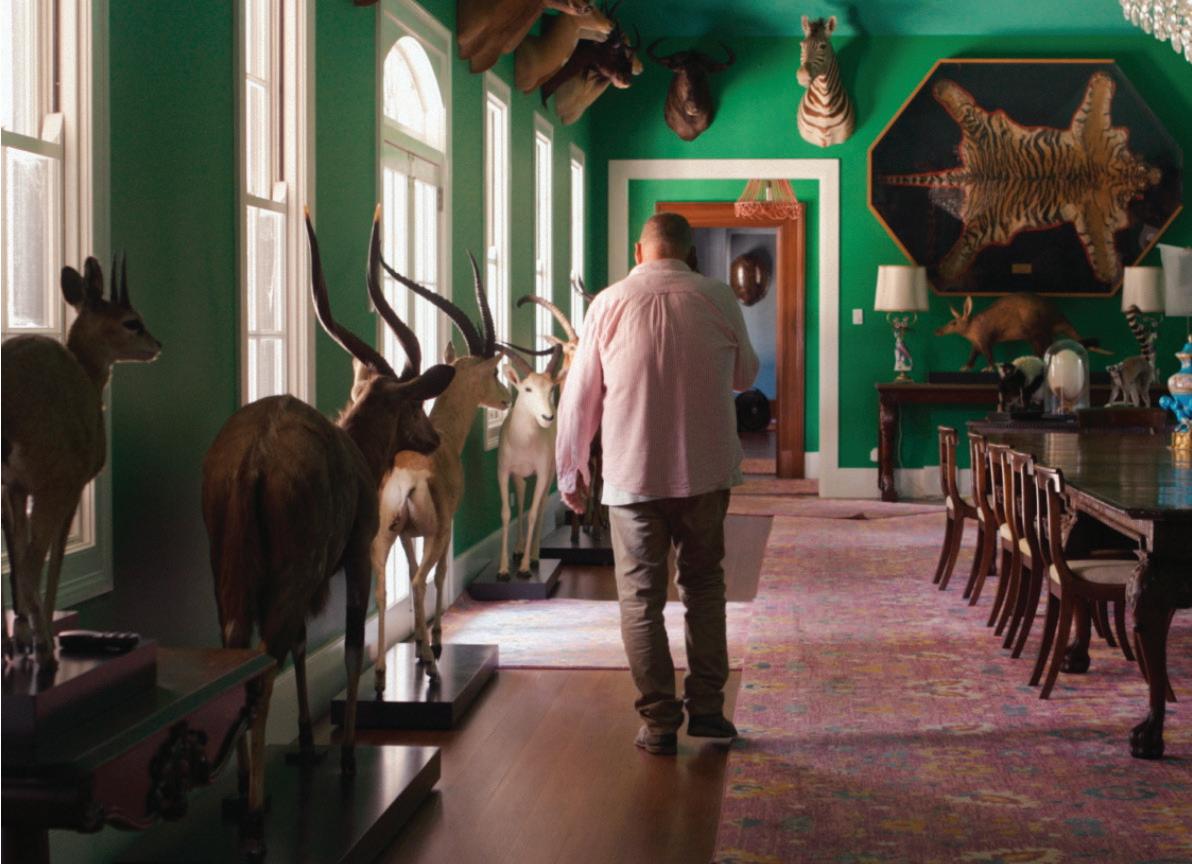
When Jenny Hicks, director of Dale Frank - Nobody’s Sweetie - a documentary based on the life of the Australian artist - rst met Dale, it was under unusual circumstances. She was searching for a two-story farmhouse for a lm.
“I had a real estate agent in Singleton who told me there was an artist up the hill who had a two-story house. I tracked him down online and went to check it out as a potential location,” Hicks says.
“And of course, it was nothing like a farmhouse.”
No, Dale Frank’s house is not your typical home. It has achieved near-mythic status, much like many aspects of Frank’s life. It's a big, solitary place out in the bush - where the reclusive artist lives and works.
That chance encounter marked the beginning of Hicks’ entry into Frank’s eccentric, fiercely private world - contributing to, or perhaps deconstructing, the mythology that surrounds him.
“A year or so later, when my film came out, he rang me and asked, Why didn’t you use my house?” Hicks says.
“And I told him, Because it’s an artist’s house, not a farmer’s house. And he said, Well, why don’t we make a film together? So I went round for a cup of tea.”
Everything in the house is beautiful,” she says.
“He does the finest of everything - not in a showy or silver-spoon way - but with care and vision. His interiors, his colours, the gardens, the paintings - he has this incredible eye. He’s an artist with a capital A.
“And yet, the only thing he wears is a pair of grubby old shorts covered in paint - he looks like a hobo half the time. But everything he surrounds himself with is stunning.”
The documentary captures these lesser-seen aspects of Frank’s artistry - those personal, everyday expressions of creativity that never make it into galleries but stem from the same artistic impulse. And, of course, it showcases the work itself.
For those that don’t know, Dale Frank is one of Australia’s foremost contemporary artists. Since the 1970s, Frank has enjoyed a successful international career and in the documentary we watch as Dale evolves - his styles, themes, and ideas shifting with each new collection. He’s incredibly prolific, so there’s a lot to cover.
But even though the film dwells on his art, its true focus is the man himself - which is what makes it so compelling.
Rather than feeling like a tour through a gallery, the documentary becomes an intimate portrait: Dale tells

stories, pushes back, shares secrets.
We learn about his struggles with autism, his existential fears, and his complicated relationship with the art world. It’s like spending an hour inside his wildly creative, chaotic mind.
And although he opens up more than expected, especially for someone so isolated, there’s a clear sense that he’s still holding something back - evident in a glance at the camera or the way he carefully phrases an answer.
“I think there was a lot of trust between us,” says Hicks.
“But he’s still pretty guarded. When I’d ask direct questions, he’d pause and think very carefully before responding.”
The film ends with Frank presenting a new exhibition and walking through the gallery, interacting with guests. He doesn’t say a wordbut the look in his eyes reveals the discomfort and pain of being forced to socialise.
And in that moment, despite all his bravado, we see the

vulnerability beneath - the fear.
Fear of not being liked. Of not being able to continue making art. Of dying. Of embarrassment. Of everything. But it’s this same fear, paired with his outward confidence and occasional obnoxiousness, that allows him to push through and keep creating. That, Hicks says, was the most inspiring part of working with him.
“A few times, when I was having a nervous breakdown while making the film - for one reason or another - he would get right behind me and say, ‘This is your film. You do it your way,’” Hicks recalls.
“He gave me these little pep talks, reminding me not to compromise just because of the money or other people’s expectations. And I hope some of that rubbed off on me. Even now, when I’m having a rough day, I think: What would Dale do?”
Dale Frank - Nobody’s Sweetie, directed by Jenny Hicks, is now showing at Dendy Cinemas.









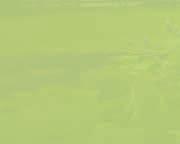




She was greeted by Frank’s lush botanic garden, filled with palm trees, cacti, and all sorts of plants he had collected and cultivated. Inside, the house revealed quirky yet beautiful interiors and taxidermied animals scattered throughout.
“Dale is a mega creative force. Everything he touches, sees, or surrounds himself with is beautiful. I mean, you open a drawer in the kitchen to get a tea towel, and all the tea towels are beautiful.





raises questions but let’s not forget the science
Voters arriving at Werri Beach on Saturday morning were met with a confronting sight. An installation called Forest of the Fallen had been set up beside the polling booth. Dozens of placards lined the walkway, each bearing a name, photo and story of someone whose
killed by a COVID-19 vaccine. The display, peaceful but emotionally charged, is part of a national campaign challenging vaccine safety and advocating for medical choice.
As someone who spent years working as a pharmacist, I understand where some of this anxiety comes from. No medicine is without risk. But

few with strict international rules. If you were travelling to or from parts of Africa or South America, you had to show proof of vaccination or risk being turned away at the border. Other vaccines, like typhoid and cholera, weren’t usually compulsory but were strongly recommended depending on where you were going and how you were travelling. These days, for most destinations, vaccines are no longer a formal requirement but a choice. That’s a sign of how successful public health efforts have been. But it also means we’re losing the collective memory of what life was like before vaccines became part of the background.
The danger in displays like this one is not just the stories. It is the doubt they plant, especially among people too young to remember a world before routine immunisation.
The personal grief is real and should be treated with compassion, but public health is built on collective protection, not individual anecdotes.
Science is not perfect, but it is our best tool for navigating uncertainty. That matters on election day, and every other day too.

The South Coast will get a taste of the retro rugby league sensation which has proved extremely popular in Sydney when the Beer Footy and Food Festival comes to Bomaderry for Group 7’s Magic Round at the end of the month.
Bomaderry’s newly renovated Royal Artie Smith Oval will be the place to be on 31 May when the festival is held on the South Coast for the first time.
The festival has attracted large crowds to NSW Cup matches at Newtown’s Henson Park and North Sydney Oval, home of the Bears, and tickets are on sale for the Group 7 version.
There will be four games at the festival which doubles as
the Group 7 Magic Round Berry-Shoalhaven Heads Magpies v Milton-Ulladulla Bulldogs 12.00pm Jamberoo Superoos v Albion Park-Oak Flats Eagles 1.45pm Nowra-Bomaderry Jets v Shellharbour Sharks 3.30pm Stingrays of Shellharbour v Gerringong Lions 5.15pm
The day promises to be one for the books, and will add to the rich 110+ years of Rugby League History on the beautiful South Coast.
As part of the festival, fans will be able to sample great beer, delicious food while watching the footy.
There will be an impressive line-up of more than 20 craft brewers, as well as the food trucks and vendors that footy












festival fans have come to know and love. DJs will be spinning tunes throughout the day and the kids and families will be looked after with a dedicated family area and kids inflatable world. Tickets are on sale via www. beerfootyfood.com. General Admission is $25, Concession: $15, Kids 12+: $10 and kids under 12 are free. A Family Pass (2 adults & 2 kids) is $60 and groups of 10 or more receive a 20% discount.

Footy festivals will also be hled at North Sydney Oval (8 June) and Henson Park (26 July.
North Sydney have been in the news lateley with the Bears coming out of hibernation as part of the new NRL franchise in Perth.
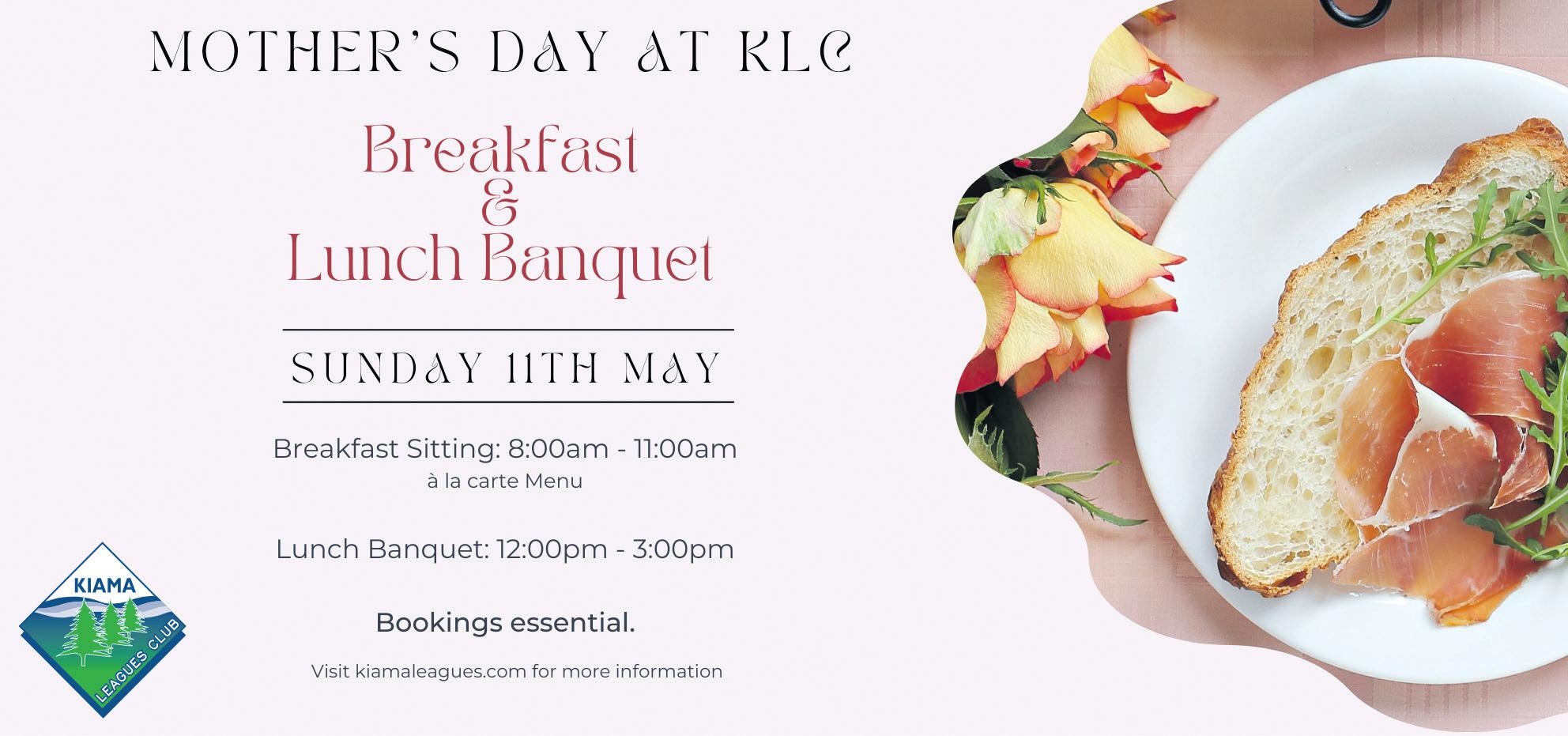





























There were plenty of tears and smiles as we farewelled Rita Sullivan, Knickerboxers founder and now former owner. The buisness will operate under new owner Pia, who recieved the keys after a teary goodbye speech. Rita has had a profound impact on the community, advocating for breast cancer survivors, supporting women’s organisations and helping women across NSW feel confident and proud.









